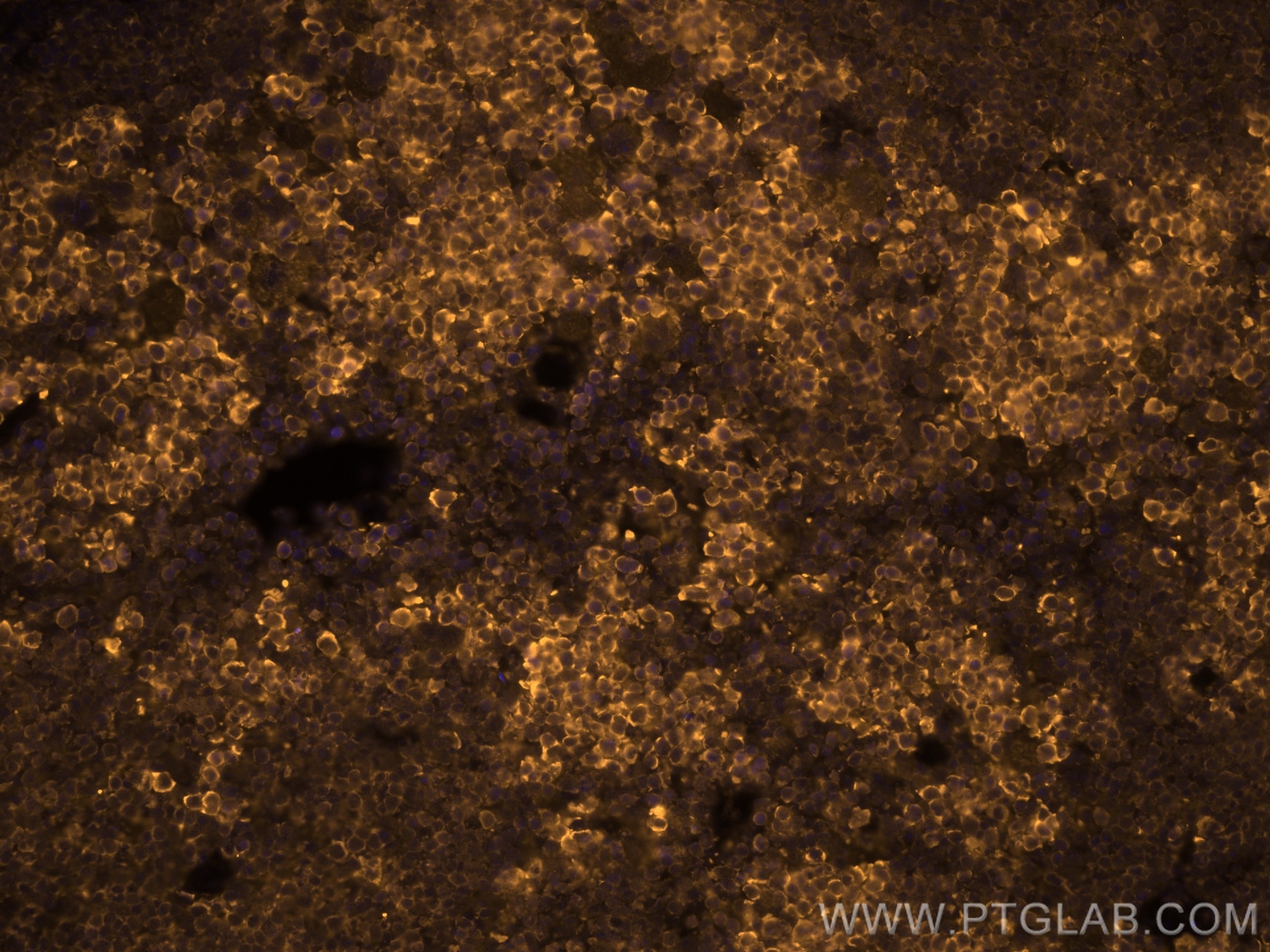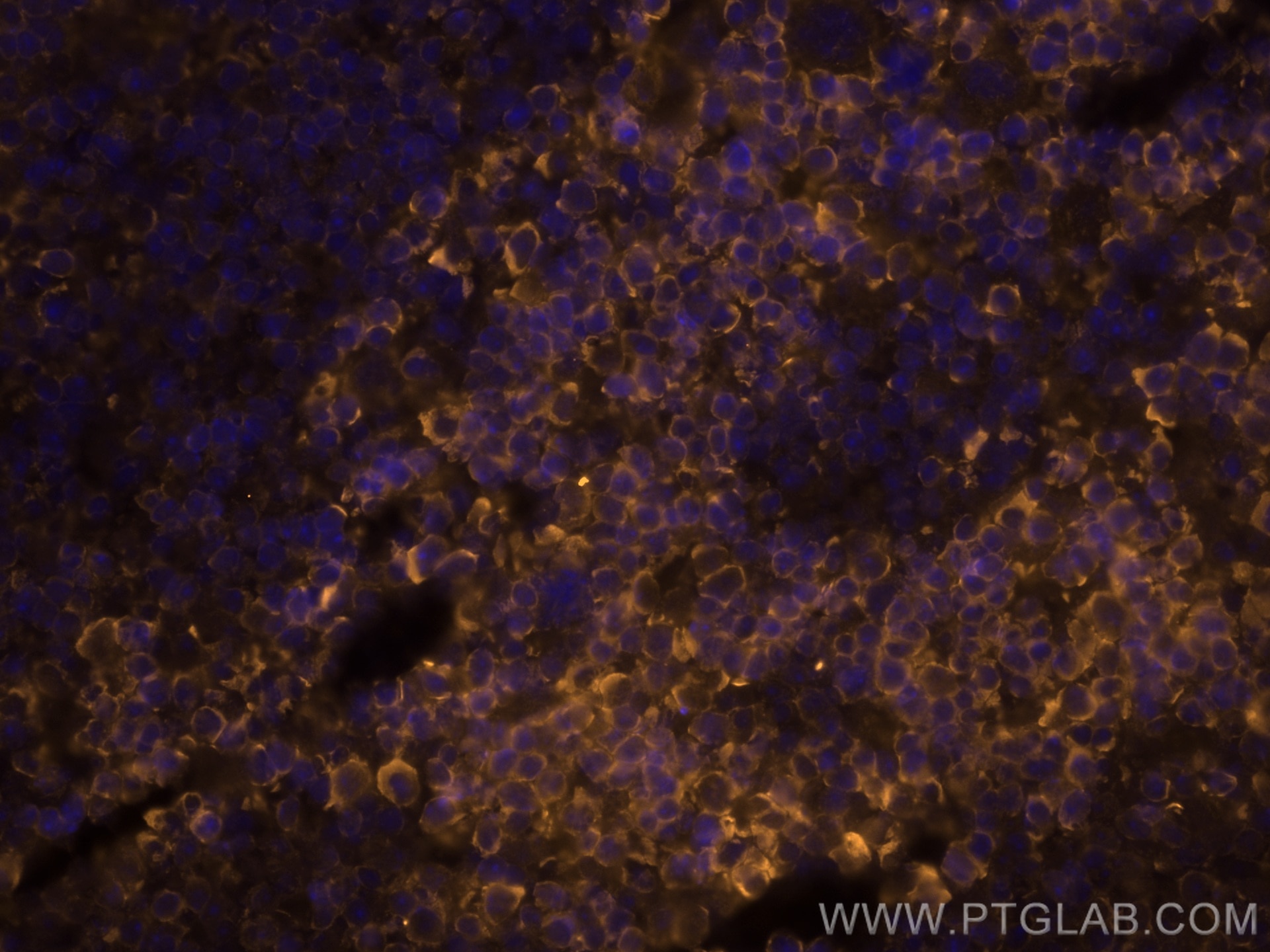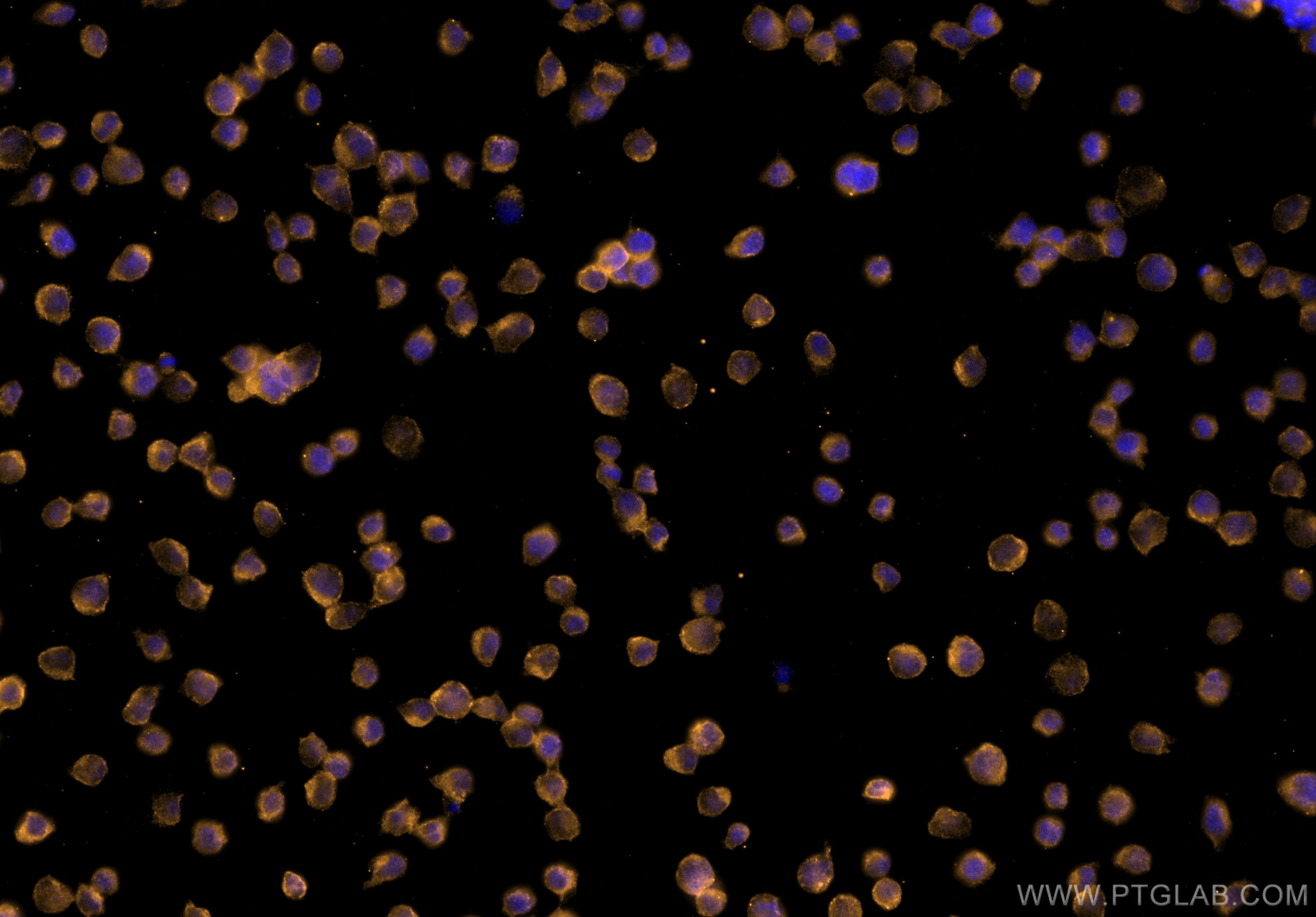Anticorps Monoclonal anti-CD45
CD45 Monoclonal Antibody for IF/ICC, IF-P
Hôte / Isotype
Mouse / IgG2a
Réactivité testée
Humain, porc, rat, souris
Applications
IF/ICC, IF-P
Conjugaison
CoraLite®555 Fluorescent Dye
CloneNo.
4E9B2
N° de cat : CL555-60287
Synonymes
Galerie de données de validation
Applications testées
| Résultats positifs en IF-P | tissu splénique de souris, |
| Résultats positifs en IF/ICC | cellules Jurkat, |
Dilution recommandée
| Application | Dilution |
|---|---|
| Immunofluorescence (IF)-P | IF-P : 1:50-1:500 |
| Immunofluorescence (IF)/ICC | IF/ICC : 1:50-1:500 |
| It is recommended that this reagent should be titrated in each testing system to obtain optimal results. | |
| Sample-dependent, check data in validation data gallery | |
Informations sur le produit
CL555-60287 cible CD45 dans les applications de IF/ICC, IF-P et montre une réactivité avec des échantillons Humain, porc, rat, souris
| Réactivité | Humain, porc, rat, souris |
| Hôte / Isotype | Mouse / IgG2a |
| Clonalité | Monoclonal |
| Type | Anticorps |
| Immunogène | CD45 Protéine recombinante Ag13712 |
| Nom complet | protein tyrosine phosphatase, receptor type, C |
| Masse moléculaire calculée | 1304 aa, 147 kDa |
| Poids moléculaire observé | 220 kDa |
| Numéro d’acquisition GenBank | BC014239 |
| Symbole du gène | CD45 |
| Identification du gène (NCBI) | 5788 |
| Conjugaison | CoraLite®555 Fluorescent Dye |
| Excitation/Emission maxima wavelengths | 557 nm / 570nm |
| Forme | Liquide |
| Méthode de purification | Purification par protéine A |
| Tampon de stockage | PBS with 50% glycerol, 0.05% Proclin300, 0.5% BSA |
| Conditions de stockage | Stocker à -20 °C. Éviter toute exposition à la lumière. Stable pendant un an après l'expédition. L'aliquotage n'est pas nécessaire pour le stockage à -20oC Les 20ul contiennent 0,1% de BSA. |
Informations générales
Protein tyrosine phosphatase receptor type C (PTPRC) is also known as CD45 antigen, which was originally called leukocyte common antigen (LCA). CD45 is an enzyme required for T-cell activation through the antigen receptor consisting of two intracellular phosphatase domains, a transmembrane domain and an extracellular domain. Upon T-cell activation, CD45 recruits and dephosphorylates SKAP1 via an interaction through the first PTPase domain, which is the only domain to possess intrinsic kinase activity. However, both domains are required for appropriate phosphatase and T-cell antigen receptor activity (PMID: 8076596).
What is the molecular weight of CD45?
The molecular weight of CD45 is a 180-240 kDa.
What are the isoforms of CD45?
Six different human isoforms of CD45 have been isolated, containing all three exons (ABC isoform), two of the three exons (AB and BC isoforms), only one exon (A isoform or B isoform), or no exons (O isoform). All of the isoforms have the same eight amino acids at their amino-terminus (PMID: 12412720).
What is the tissue specificity of CD45?
CD45 is a tyrosine phosphatase expressed on the plasma membrane of all hematopoietic cells, except erythrocytes and platelets (PMID: 7803253).
What are the post-translational modifications of CD45?
CD45 can be heavily N- and O-glycosylated (PMID: 1702721).
What is CD45's involvement in disease?
Defects in CD45 are a cause of severe combined immunodeficiency autosomal recessive T-cell-negative/B-cell-positive/NK-cell-positive (T(-)B(+)NK(+) SCID); a severe form of SCID. It is classed by the impairment of both humoral and cell-mediated immunity, leukopenia, and the low or absent levels of antibodies (PMID: 10700239). Also, genetic variants of CD45 have a role in susceptibility to multiple sclerosis (PMID: 12864992).
Protocole
| Product Specific Protocols | |
|---|---|
| IF protocol for CL555 CD45 antibody CL555-60287 | Download protocol |
| Standard Protocols | |
|---|---|
| Click here to view our Standard Protocols |




